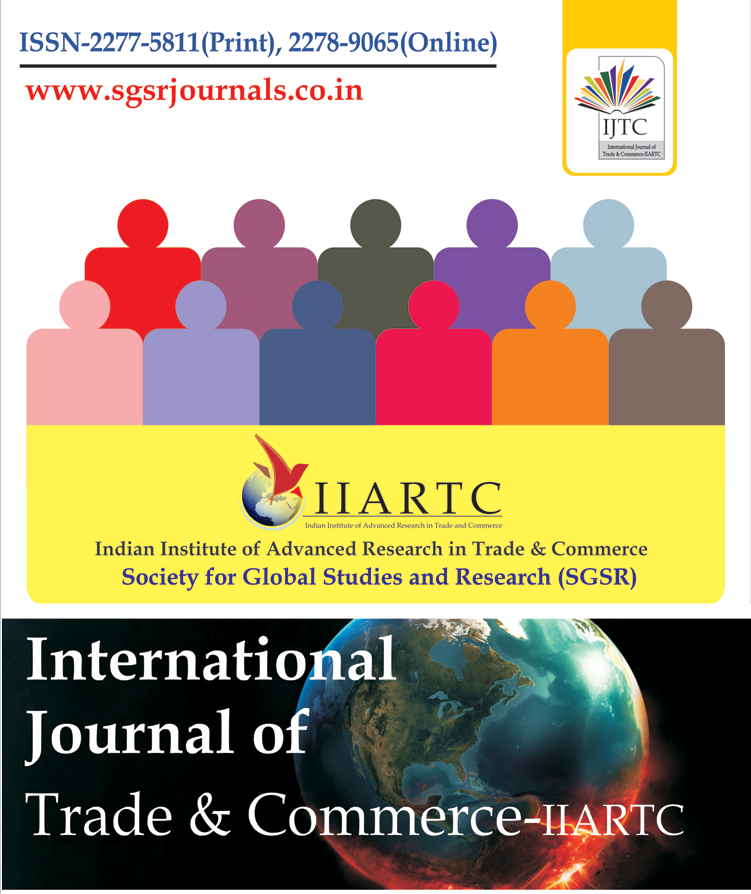Home ⇨ International Journal of Trade & Commerce-IIARTC

International Journal of Trade & Commerce-IIARTC
Impact Factor (IF):5.135 (COSMOS), IF:7.249 (ISRA), IF:3.721 (ISI)
ISSN:2277-5811 (P), ISSN:2278-9065 (O)
Frequency: Half Yearly
China’s Military Fault Lines
Over a period of time, external threats to China have receded. Internally; however, China is facing sub-national movements in its non - Han buffer regions i.e., Xinjiang and Tibet. Both the regions are extremely crucial for China to shape its regional periphery, energy security, water security, and promotion of commerce and trade. Tibetan dilemma when connected with unsettled borders with India poses a security challenge to China. In addition to these sub-nationalistic movements, internal stability and continued support for the party rule is another major concern. The party has an unwritten understanding with the Chinese population that it would continue to provide political stability and economic prosperity in return for surrendering some political freedom to the common man. So far both ends had held their side of the bargain. The brief outpouring of public resentment in the 1989 –Tiananmen Square incident, was a direct outcome of spiralling inflation as also unbridled corruption as a result of economic liberalization. According to the Chinese, if China intends to become a major power by 2025 and world power by 2050, it should have a powerful military that can uphold its perceived historical territorial claims as well as security goals. It has started a highly significant military modernization program centered on specialized asymmetric warfare capabilities/disruptive technologies, supported by liberal defence expenditure that is second only to that of the US. More crucially, China has repeatedly shown a propensity to use military choices not just against its neighbours but also against the US and the former Soviet Union.
Author:Sanjay Kumar *
Abstract:Over a period of time, external threats to China have receded. Internally; however, China is facing sub-national movements in its non - Han buffer regions i.e., Xinjiang and Tibet. Both the regions are extremely crucial for China to shape its regional periphery, energy security, water security, and promotion of commerce and trade. Tibetan dilemma when connected with unsettled borders with India poses a security challenge to China. In addition to these sub-nationalistic movements, internal stability and continued support for the party rule is another major concern. The party has an unwritten understanding with the Chinese population that it would continue to provide political stability and economic prosperity in return for surrendering some political freedom to the common man. So far both ends had held their side of the bargain. The brief outpouring of public resentment in the 1989 –Tiananmen Square incident, was a direct outcome of spiralling inflation as also unbridled corruption as a result of economic liberalization. According to the Chinese, if China intends to become a major power by 2025 and world power by 2050, it should have a powerful military that can uphold its perceived historical territorial claims as well as security goals. It has started a highly significant military modernization program centered on specialized asymmetric warfare capabilities/disruptive technologies, supported by liberal defence expenditure that is second only to that of the US. More crucially, China has repeatedly shown a propensity to use military choices not just against its neighbours but also against the US and the former Soviet Union.




